  I thought that I would take a little break from cooking and canning and share something fun that I like to do for bridal showers, graduations, weddings and birthdays. Spring is a comin’ and that means all kinds of those things! I am sure that some of you have seen these roses made, but I like to add a little zing to the presentation. The roses are quite simple to make and it is so fun to see the look on the recipient’s face upon receiving a bouquet of “money roses.” And it LOOKS expensive!! All you need to make the roses is: ~Crisp, new bills in whatever denomination you choose (I use dollar bills – yes, I’m cheap but I can make more flowers!) ~Floral wire ~Floral tape ~Leaves from silk flowers ~Glue Dots  Choose which side of the bills that you want to be facing up and determine how many roses you will be making. You will be using three or four bills per rose. I usually do $20 into 5 roses. Prepare to make the center petals for each flower. Using a toothpick, roll the corners of the bills, that will be the centers, around the toothpick and roll until you have rolled past halfway of the short end of the bill. Repeat this process on all four corners. I do the center piece in two different ways: Either using it with the corners rolled toward the inside or with the corners rolled to the outside. I just judge which way will look better for what I want to do. You will see what I mean later.  Roll all of the rest of the bills with the corners rolled under, away from the the top. 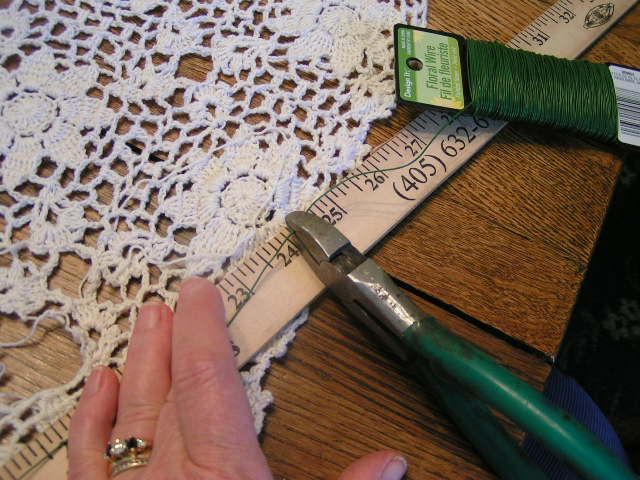 For each bill, cut a piece of floral wire about 24″ long and fold in half  Pinch the center of the bills that will be the middle of the roses – in this case, the ones with the corners rolled to the inside 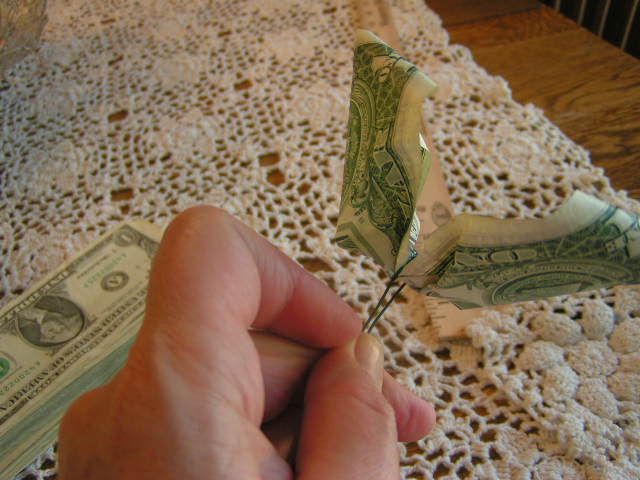 Put a wire over the pinched center of the bill and twist wire tight with no more than two twists and lay aside in a pile 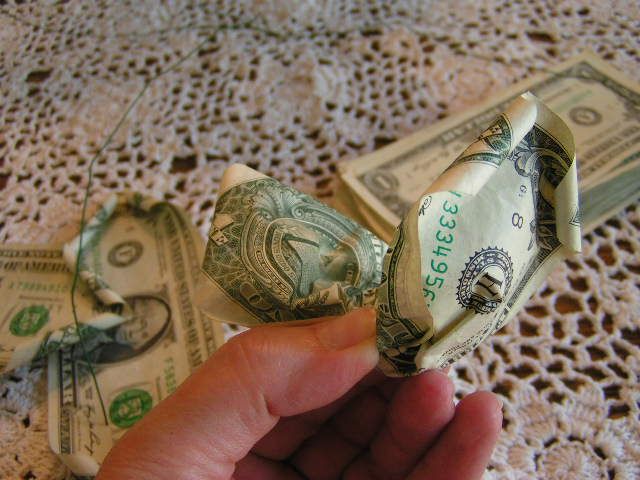 Put wires over all of the other “petals” with the rolled corners rolled under the bills. Twist them tight as above and lay them aside separate from the ‘middles’ that have the corners rolled up toward the center. 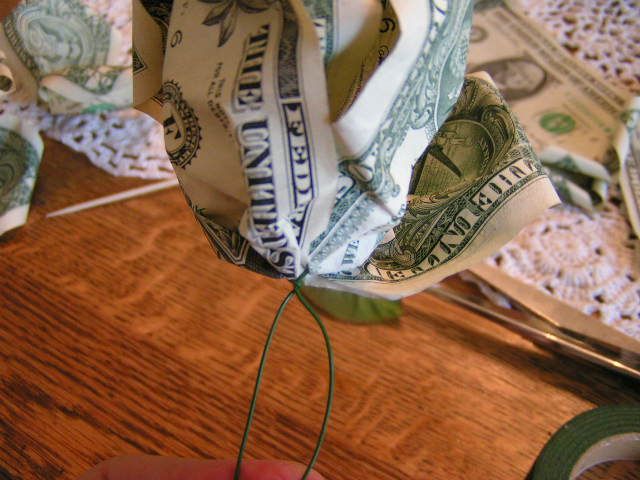 Place one “middle” in the center of one of the bills that will be petals and hold the wires together.  Place a third bill perpendicular to the second bill and hold the wires together. You can add a fourth petal perpendicular to the third for a fuller rose. Press/pull the bills together from the base to tighten the flower. Twist all the wires together 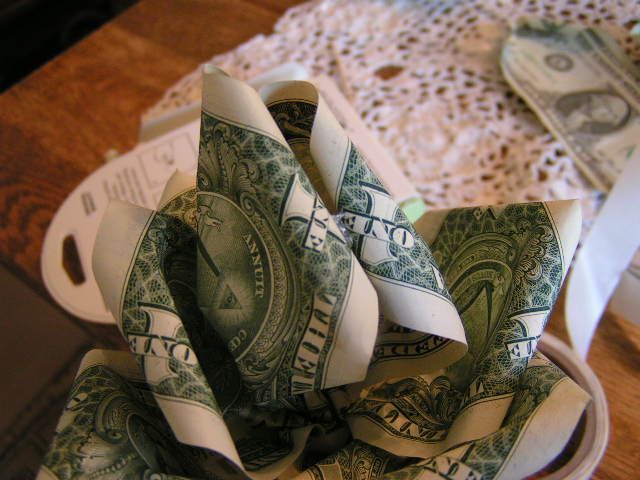 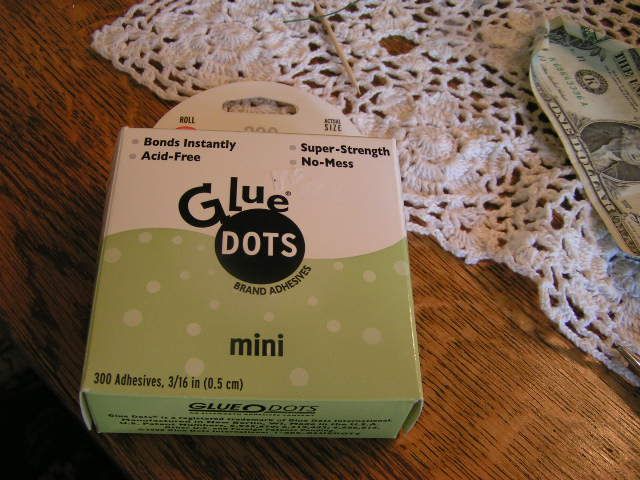 If the center petals have the corners rolled inward, use a glue dot to pull them together in a point. If you choose to use all bills with the corners rolled under, use a glue dot on the two edges of the center bill to pull the two sides together. 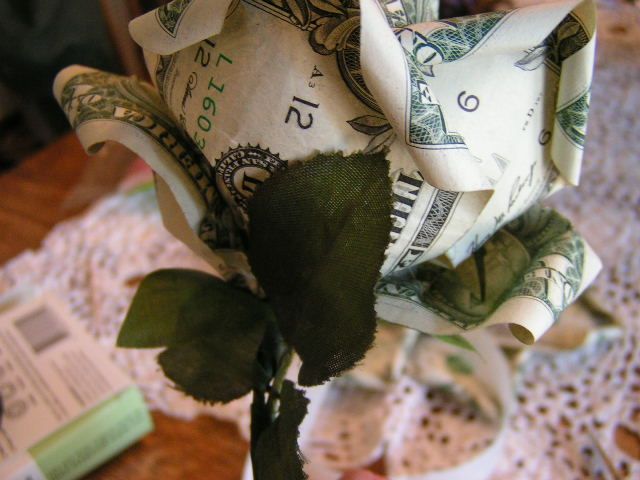 Place a few leaves around the bottom of the flowers and, using floral tape, attach them to the base and wires. 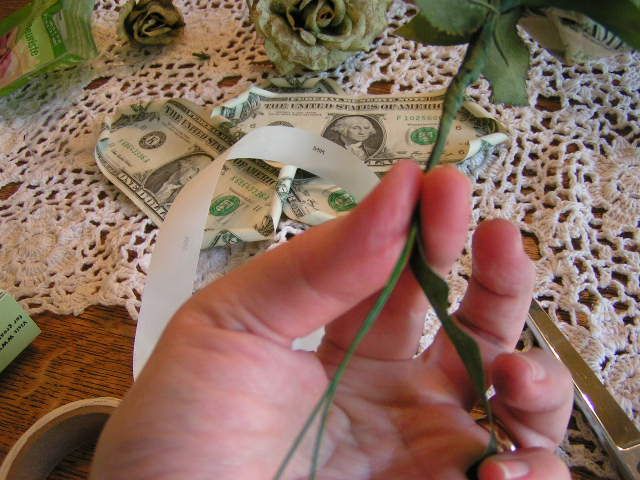 Tightly wrap, stretching as you go, several layers of floral tape down the wire to produce a “stem”.  I like to arrange my “roses” in a tall, cylindrical floral vase that costs all of $3 at Walmart. They come in all different colors and it is fun to fill the bottom with colored rocks or glass. Sometimes, I will put two one dollar bills in the bottom facing out just to add some interest. Here, I have added a few silk flowers as the base of the arrangement and then put the “roses” above them. The arrangement is surrounded by a cello bag, which can be purchased from Walmart or Hobby Lobby, which is gathered at the top with a rubber band and then tied with a bow and ribbon.   This one is a little more onate with multiple silk flowers, berries and curling ribbon. I put glass beads in the bottom and then took green tissue paper and pushed down inside the vase with the corners hanging out around the top of the vase so that it would act as a backdrop for the arrangement. In this arrangement, the centers of the roses are rolled under like the rest of the petals. Just thought I’d show the difference. These roses look like they are difficult to make, but they are EASY and you can do it in one afternoon. And talk about a conversation starter!! |
|
Oklahoma Pastry Cloth™ Company on Facebook
|
Archive for February, 2011
Craft Corner: Stretching a Buck
Monday, February 28th, 2011
Canned Broth
Saturday, February 26th, 2011
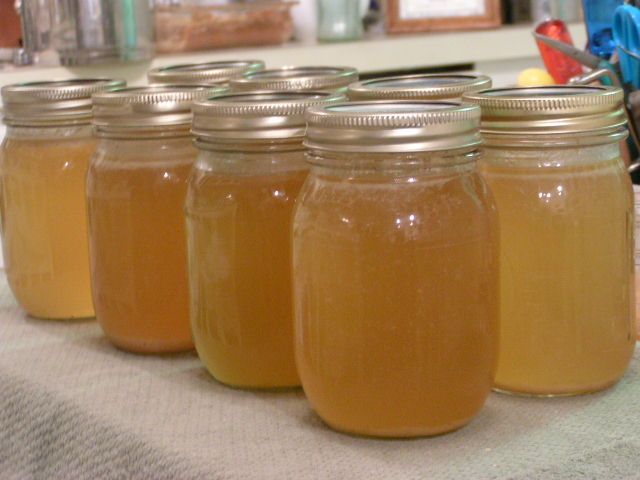 A reader of the very informative blog Rural Revolution, A. McSp, shared a wonderful recipe for chicken stock to be used for cooking pinto beans, soups – you name it. I decided to try it and am in love. First, the smell that permeates your house while cooking this stuff is enough to call Glade and ask if they make Chicken Stock in a Can Air Freshener, second, the flavor is so rich that it makes everything to which it is added have more body, and third, it’s canable – oh wait – that’s not a real word unless you’re talking about creepy hungry people and can’t spell. How about this: It can be canned! You know that always gets me right here (pointing to my heart now). I’m afraid that I was so involved in the process that I didn’t do my normal photo session and so I’m just going to have to give you the recipe with only a few photos and a video. Sorry for my brain freeze. I did get a couple of shots! Here are the steps to this amazing chicken stock! 1. When you cook a chicken, save the carcass, skin and all and if you aren’t going to make stock immediately, put it in the frig until you are ready, no more than a couple of days. 2. Cut or break the bones up into pieces using kitchen shears. 3. Put the bones and skin into a stock pot and cover with water, about a gallon plus. 4. Add 1-4 stalks of celery. I used my dried celery! 4 tbsp to equal 4 stalks. I love my dried celery! 5. Add 1/2 medium onion 6. Add 4-5 cloves of garlic 7. Add parsley if you have it 8. Add 1/2 tsp dill seed if you have it 9. Now here she said to add 1/2 tsp dried orange peel, but I didn’t have dried so I used 1 tsp of fresh orange zest. Oh my. I think I prefer that to the dried!! 10. Add 3 tbsp white vinegar and the juice of one half lemon or lime 11. Add salt and pepper to taste (side note: If you want an even more robust chicken flavor add 1/2 – 1 tsp granulated chicken bouillon per pint jar of stock) Bring to a boil and stew on low heat for two to three hours. The vinegar and the lime or lemon juice pull the calcium out of the bones and so your broth is rich in calcium. As the stock stews, I add a little water to maintain the water level. When the cooking time is reached, I pour the broth, bones and veggies into a colandar that is sitting over a large bowl or another stew pot, to strain the broth. I press the stuff left in the colandar with a potato masher to get out all of the liquid and flavor into the stock in the bowl. At that point, I ladel the soup into jars, leaving a 1/2″ head space, clean the rims of the jars, attach the lids and rings and put them into a pressure canner of hot water (the jars of liquid are hot and will crack in cool water) to be processed for 20 minutes at 10 lbs pressure. One chicken gives me 10 pints of broth. 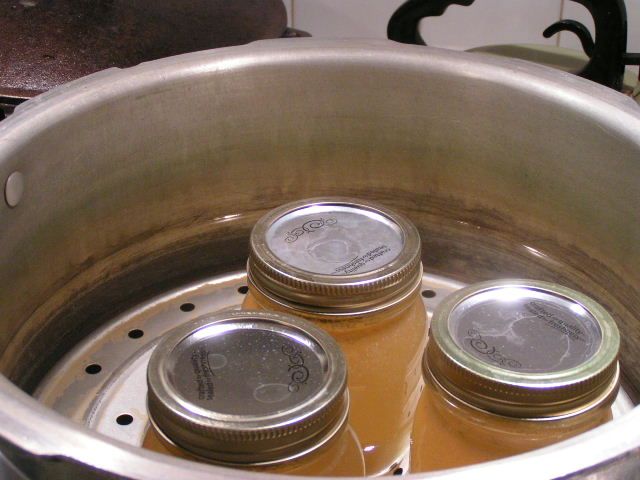 Unlike waterbath canning, the water level in a pressure canner is only about 2″ deep. 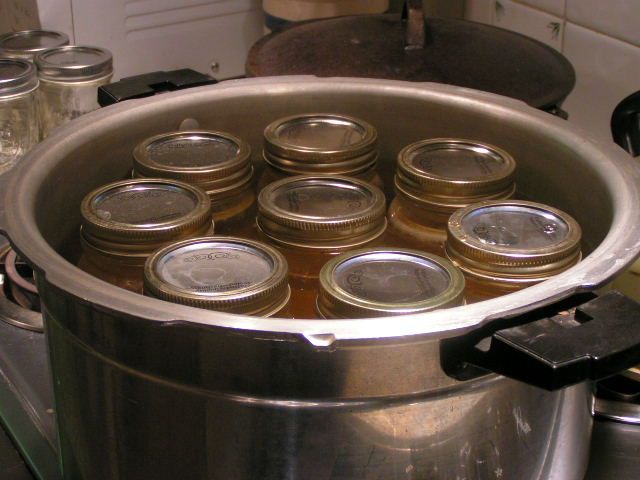 The jars sit in the water, but are not covered by it as in a waterbath. I did a video of the pressure canner as it was doing it’s thing this afternoon. I’ve had several people ask me how it is supposed to sound. If you will notice, it jiggles for a bit and then stops and then jiggles and stops. That is the rhythm that you want to achieve to keep an even pressure. I start out on high heat and when the weight starts vibrating, I start turning the heat down until I get a uniform rhythm. I bought this canner in 1977! It has been a jewel. Pardon the noise of the microwave in the background. Halfway through I realized it and turned it off! Last night, I made pinto beans with two pints of broth, two tbsp brown sugar and a slice of home-cured country ham. Oh my. I’m still grinning. |
|
Oklahoma Pastry Cloth™ Company on Facebook
|
Canning Butter
Thursday, February 24th, 2011
|
I have a question. If milk is nature’s most perfect food, as we ALL learned in our science classes many years ago and have heard on many a dairy commercial, why isn’t butter perfect too? Why has butter gotten such a bad rap when it is simply the richest part of the milk that has been whipped to a frenzy? All I know is that butter is all-natural and has to be a whole lot better for you than the fake spreads that marketers have tried to pawn off on us as the nutritionally better alternative. We humans seem to always go down the road of trying to improve on what comes naturally and then wind up right back where we started, concluding that the original product isn’t so bad after all. 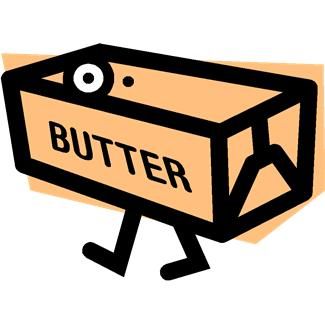 I have admitted my affinity for butter in past posts but I am in no way an addict to the stuff. Really. I can quit using it anytime. Really. I use it in moderation mixed with olive oil and am known to spread it sparingly on a slice of fresh homemade bread. Really. But there is simply no substitute for the stuff when it comes to sauces, cajun cuisine and toast.  So did you hear about the solar flares that scientists are afraid are going to destroy the earth? Well, not destroy exactly…just leave us in an electronic lurch which would pretty well destroy the majority of us who can’t live without a cell phone, computer or electric toothbrush. How in the world can I keep my precious butter from spoiling if our refrigerators aren’t running? Well, I can it, silly! I gathered all of the info I could from several sources on the internet and have started canning part of my butter when I find it on sale. The Indians in India have been canning clarified butter, called ghee, for ages and ages. I like to can my butter whole. Take a peek at what is working for me:  Wash jars in hot soapy water and boil in a large pot or wash on the sterilize cycle in the dishwasher. Place the jars on a cookie sheet. Here I am using 8 oz jars which hold about 1 1/3 sticks of butter. In this run, I used 9 – 8 oz jars for 12 sticks of butter or 3 lbs. Put the cookie sheet of jars into a 250º oven and heat for 20 minutes. 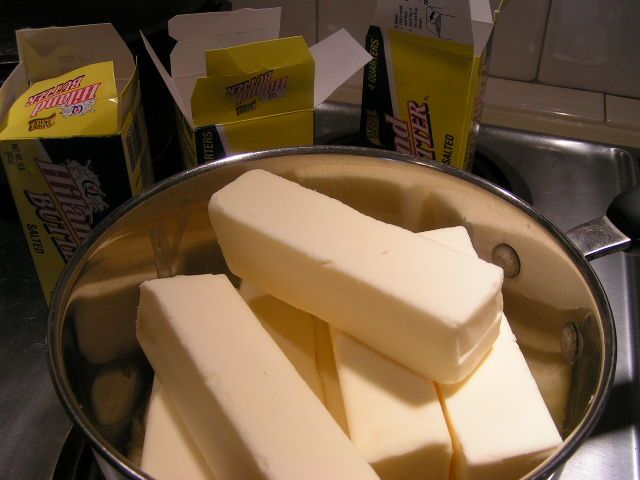 Place sticks of salted butter in a large pan. I do about three pounds at a time simply for ease. The larger pots get too heavy to manipulate and butter gets everywhere. 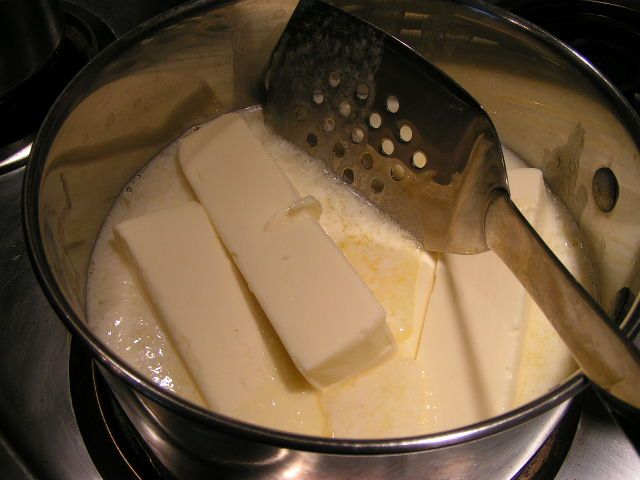 Slowly melt the butter on medium heat, stirring constantly with a metal spatula to keep from scorching on the bottom. A spatula with holes is ideal because the melted butter is pushed through the holes during stirring and helps to keep it uniform. 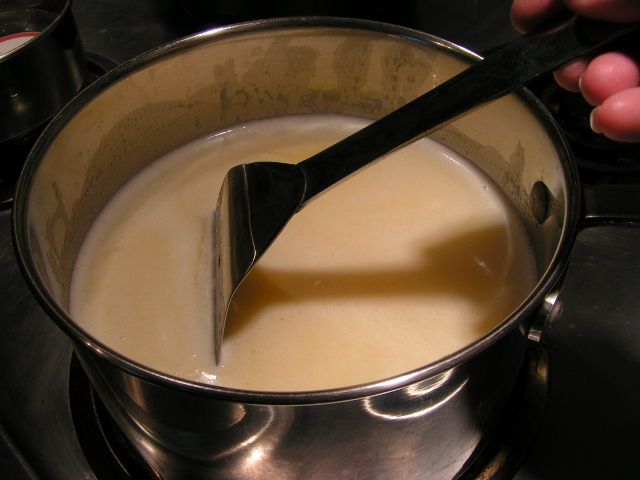 When the butter is totally melted but not quite boiling, continue to stir and allow to simmer for 10 minutes. A thick, white foam will appear. 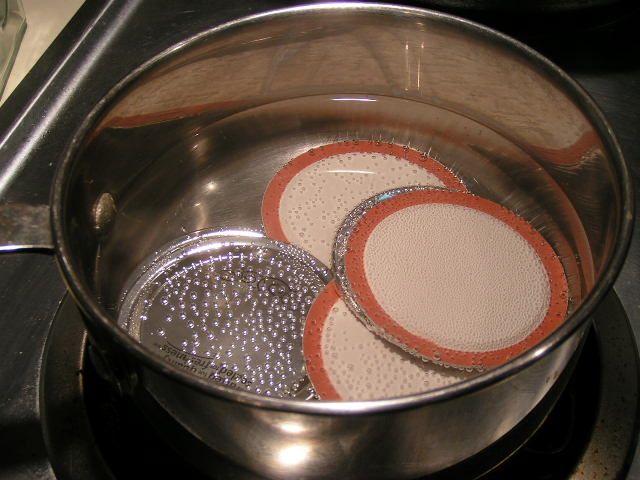 While melting the butter, place lids in a pot of water and bring to a near boil to prepare lids. Turn heat down to keep lids warm. 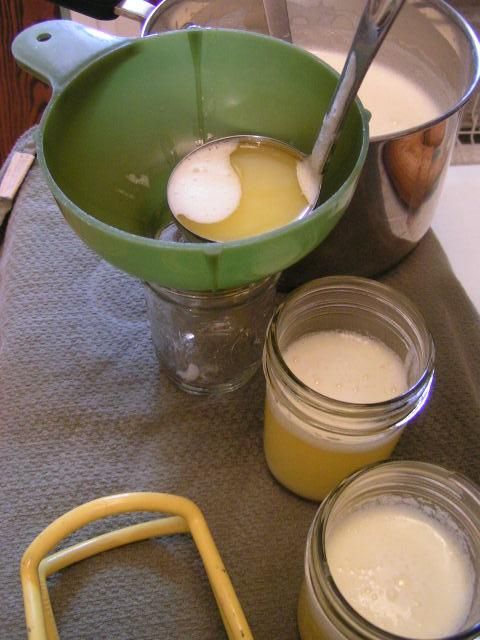 Remove jars from oven and immediately ladel butter into the jars, using a canning funnel. Be sure and stir the butter around and dip deep, pulling up, in order to keep the butter uniform, as it separates. Fill to leave a 3/4″ head space. 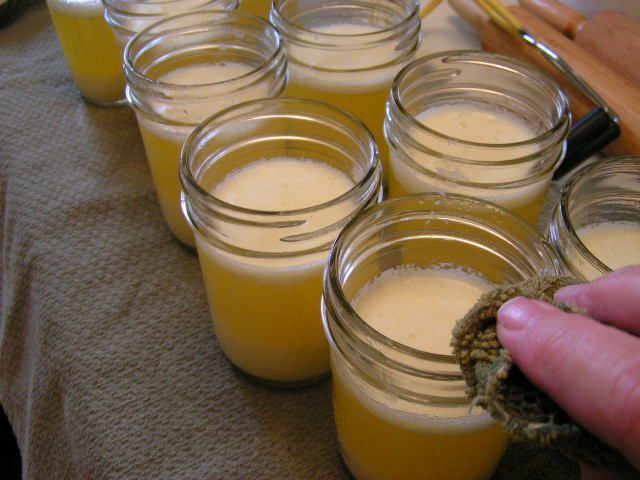 Carefully wipe the edges of the jars with a damp cloth to remove any butter. Butter on the rims will cause the jars not to seal. 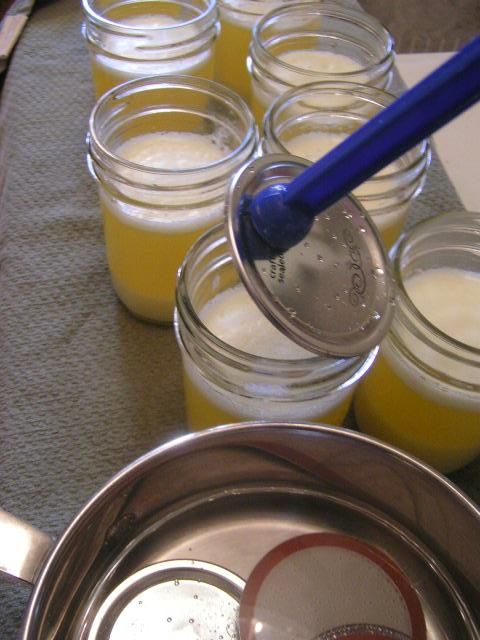 Place the lids on the jars and attach rings, tightening slightly. Place jars into a waterbath canner that has water already heated and enough to cover the jars 1″. The water needs to be heated because the jars of butter are hot and will crack in cool water. As soon as water begins to slowly boil, set timer for 15 minutes. 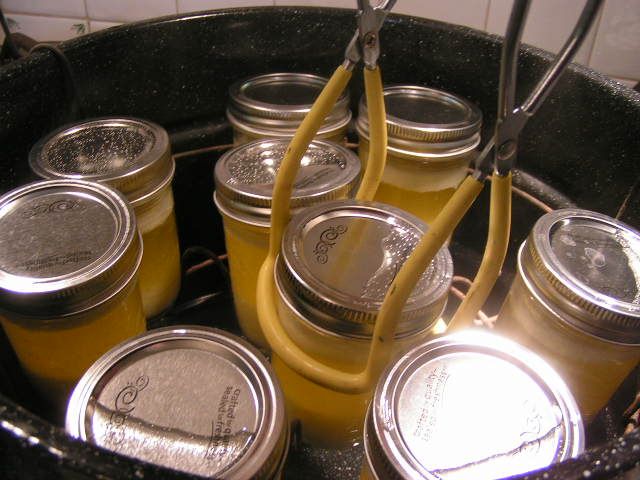 When jars have been processed for 15 minutes, turn off heat and allow to cool down in the water for another 10 minutes. Then, lift the rack to top of canner and remove jars with canning tongs. 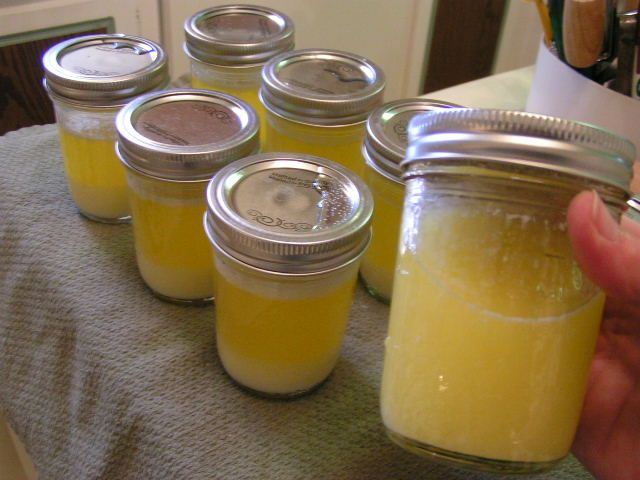 When the jars are cool enough to handle, now comes the tedious part. Every few minutes shake the jars up and down in order to make the butter uniform. If you notice in this photo, the jars to the left have sediment on the bottom and foam on the top. Shaking incorporates this into the clarified portion. Go about your business, but about every 5 minutes, stop and shake the jars. As they cool, they will stay more and more uniform. I set a timer to remind myself so that I can do clean-up.  This butter is totally cooled and ready to store in the pantry. Aren’t they pretty? I read one homesteader’s take on canning butter and she said that they actually opened some from 1999 and it was still good. Don’t think I would keep it THAT long, but it wouldn’t matter because it wouldn’t last that long around here anyway!! 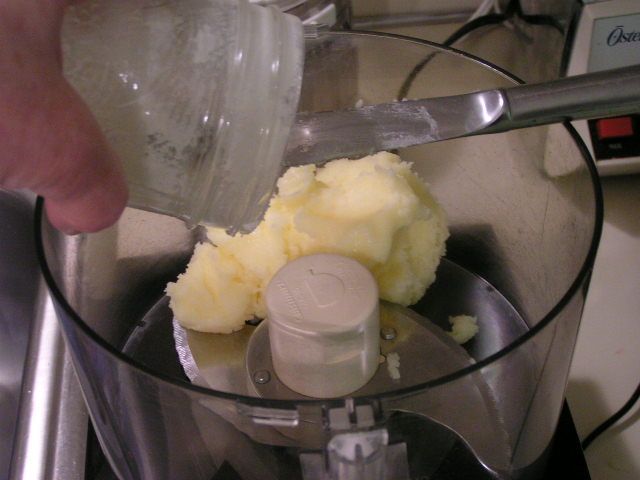 Canned butter is not quite as smooth as fresh butter, but if you are wanting a smooth, healthy spread, you can make the same recipe posted earlier with olive oil or canola oil. Just scrape butter from an 8 oz jar into the food processor or blender.  Add 1/3 cup oil. If you have canned your butter in larger jars, adjust amounts of oil. For example, a 1 pt jar of butter would require 2/3 cups of oil.  Process until smooth 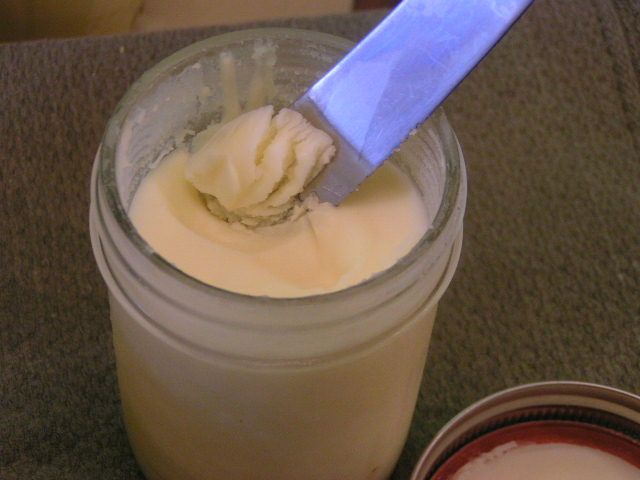 Pour back into jar and allow to harden in the frig. It will go back to the consistency of smooth, spreadable butter. Pass the Lobster, please!! |
|
Oklahoma Pastry Cloth™ Company on Facebook
|
Aging Gracefully?
Monday, February 21st, 2011
 I thought that I would take a moment away from all things cooking and maybe wax philosophical. I’m really bad about not waxing the floors, but I wax philosophical quite frequently. Just ask Mr. Fix-It.  I have the blessed joy of having had experiences in life that many people only read about in books. Some of those experiences weren’t so hot, but I always learned something in the doing. I’m not so old that I don’t remember being 18, but I’m not so young that I can bend backwards, and walk on my hands and feet like a crab. You know, we DID have to do that in high school gym class, in our younger days, and I always wondered how it was supposed to affect my outlook on life besides feeling dumb and seeing everything upside down. Well, I’ll tell you. It DID affect my life as I now have two herniated discs in my lower back and two in my neck. I am certain that walking like a crab did it. I never noticed it until a few years ago, but I KNOW the culprit. Thanks, Coach Cox. Had nothing to do with all that hay bale tossing. But my point? I’m no spring chicken.  On that note, I heard a very disturbing bit of info on the news this past week. Very disturbing. It seems, according to the headlines, that women become invisible at the age of 50. I pondered on that for awhile and I just couldn’t believe it. I mean, it’s at the age of 50 that women start getting bigger without any effort at all. It seems impossible that we could be getting bigger AND invisible at the same time, but evidently men really just can’t see us. That would explain alot. It would explain why the son, home on a visit, doesn’t answer the questions I ask him. I can now understand why Mr. Fix-It didn’t inform me that I was leaving the house in my old, ragged, backless tennis shoes (in which I informally flip-flop around), while dressed in a fancy frock for a luncheon. I was invisible!! It gives total understanding to the actions of the young bag-boy at our local grocery who asks, “Paper or plastic?” and upon my request for paper, immediately begins bagging my groceries in plastic. I think he just asks the question out of habit, because it is obvious that he can’t see or hear me.  But do you realize the advantage that we middle-aged women have now that we have found out the truth? There is no end to the possibilities this new revelation has provided!! I can sit in front of the doctor and eat a triple-decker, mayonnaise laden hamburger WITH cheese and he won’t say a word! He can’t see me!! I can buy a 1963 baby blue Impala for $15000 and bring it home and won’t have to hear about it because nobody will know where it came from since I’m invisible!! Shoot! That means I can’t get a ticket driving that 1963 baby blue Impala because the policeman can’t see me!! Oh my gosh. I can’t get my head wrapped around all of this. But wait…as I read along in the article, I now see that women only THINK that men find them invisible. That’s not very scientific. One of the ladies interviewed even shot the theory down by stating, “Even when I met the man who is now my [third] husband, I assumed he wouldn’t fancy me.” Well, he proved her wrong. He married her didn’t he?? Seems like he pretty much saw her!  More than half of the women surveyed felt that advertisements give them unrealistic expectations of how they are supposed to look beyond age 50. I can’t imagine why. The advertising world works hard to portray us women over 50 with not a gray hair on our head, shaped like Miss Universe and usually galloping across green meadows astride a sinewy steed while explaining the heartbreak of psoriasis or the inconvenience of constipation. You know that’s me! And so, I have just come in from a much more scientific inquiry of Mr. Fix-It, regarding whether he finds me invisible. He gave me a big hug and said, “How can I not see you?” I’m going to have to think on that answer, but I have a sneaky suspicion that it could hinge on that ‘getting bigger after 50″ thingy I mentioned!  |
|
Oklahoma Pastry Cloth™ Company on Facebook
|
|
|
Hashbrowns! Yum!!
Friday, February 18th, 2011
|
Is Misspelled…  It’s closing in on planting time for potatoes! I love fresh potatoes from the garden and have done posts before on them. I am planning on doing a full bed of the knobby things this year. Usually, we only do a half a bed, but we were out of potatoes too soon this time. And of course, I’ll be drying some of them. But I have another favorite way to prepare potatoes for the long haul and I have been asked by reader, Shari, to share it here. Mr. Fix-It loves hashbrowns and it is easy to take a large batch of either garden potatoes or Russets from the store and make hashbrowns to last you a long, long time. 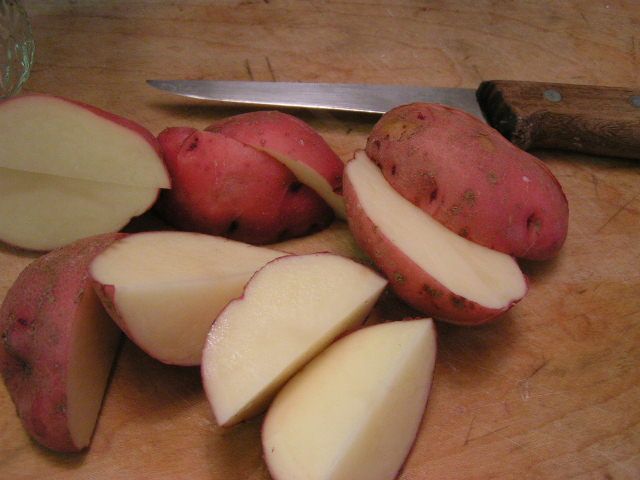 First cut up potatoes to fit into a food processor with a grating blade on it. You can also grate them by hand. Red and Yukon golds can keep the skins, but Russets are better peeled 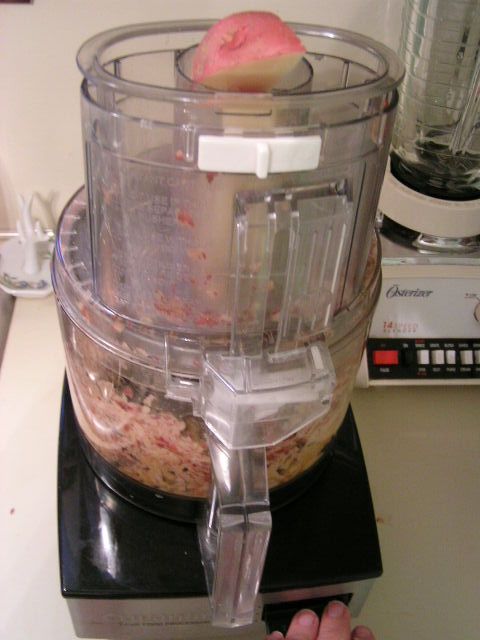 Put into a food processor to grate or do it by hand 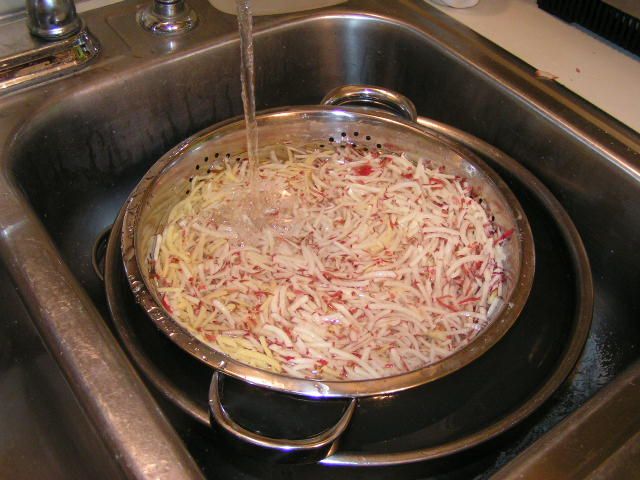 Once the potatoes are grated, put them into a collander that is in a larger bowl and pour water to cover the potatoes. Pick up the collander and swish it up and down. The water will be white and cloudy. Pour that off and do the same process until the water is clear. This washes off all of the starch that makes potatoes turn black. 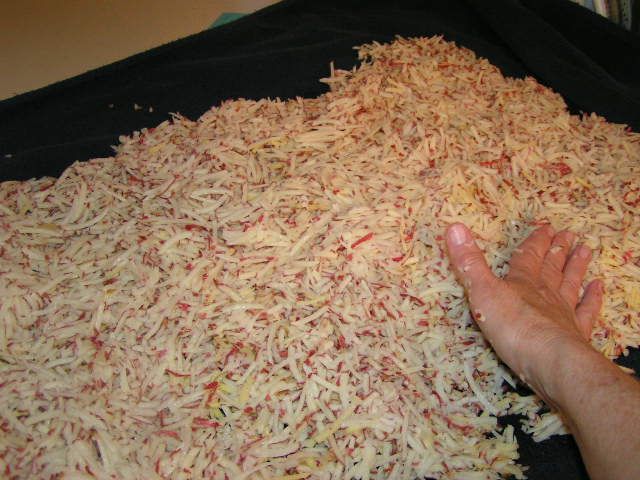 Lay a large bath towel out on the counter and spread the grated potatoes over the towel.  Fold the edges of the towel over the top of the potatoes and roll the towel up like a jelly roll, pressing as you roll. This squeezes out excess water. When you unroll it, the potatoes will be dry. 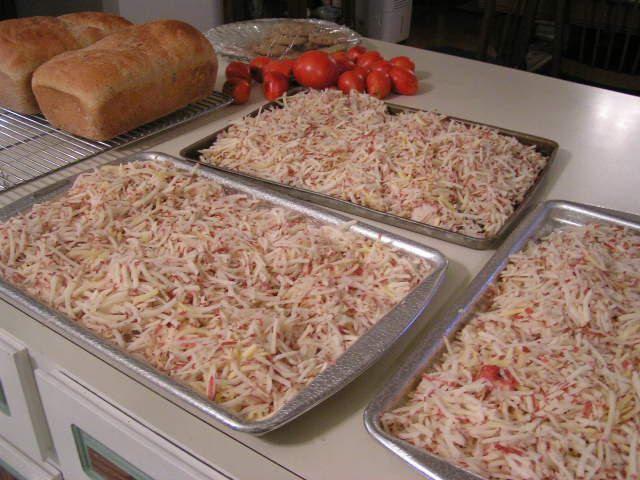 Distribute the grated potatoes among cookie sheets and place in the freezer. 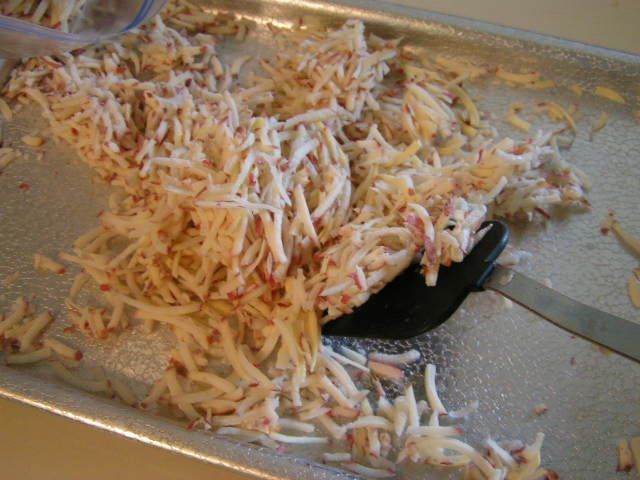 Remove from freezer and, using a spatula, lift potatoes off of the cookie sheets. 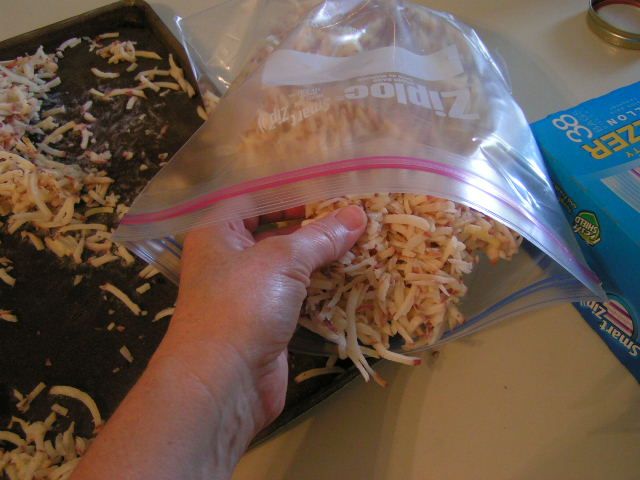 Place in plastic freezer bags 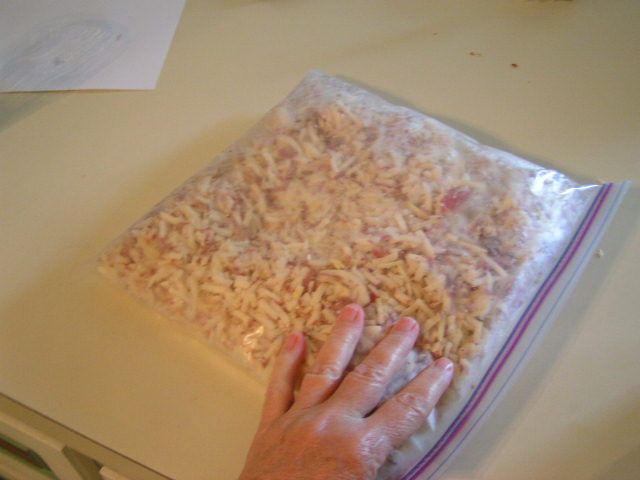 Bend the bags around to break up the slabs of frozen potatoes. Label bags and place in the freezer. 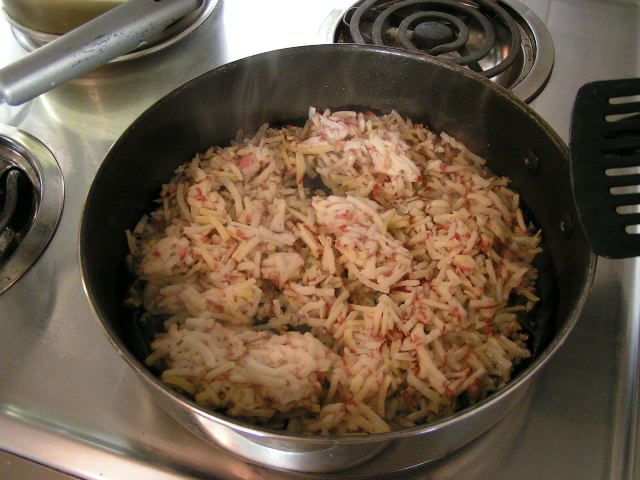 Your hashbrowns can now be used in any recipe calling for hashbrowns, even casseroles. To make old-fashioned hashbrowns for breakfast, put 2 – 6 tablspoons of oil (depending on the size of your skillet but barely covering the bottom), either olive oil or vegetable or coconut, in the bottom of a large skillet and heat on medium high. When heated, add hashbrowns to about 3/4 – 1 inch deep and salt to taste. 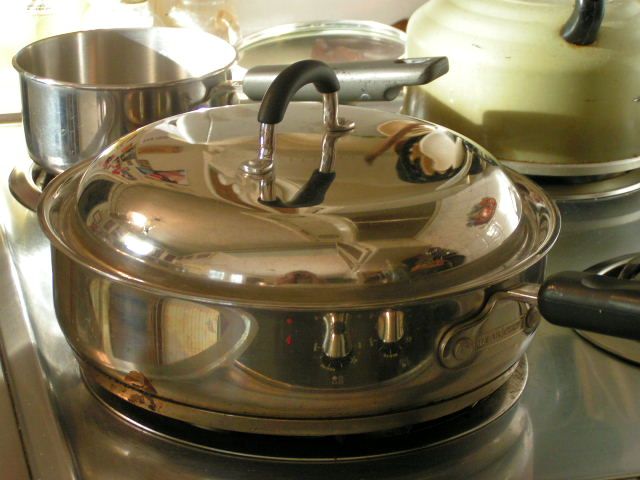 Cover with a lid and cook until the bottom of the potatoes is golden brown. 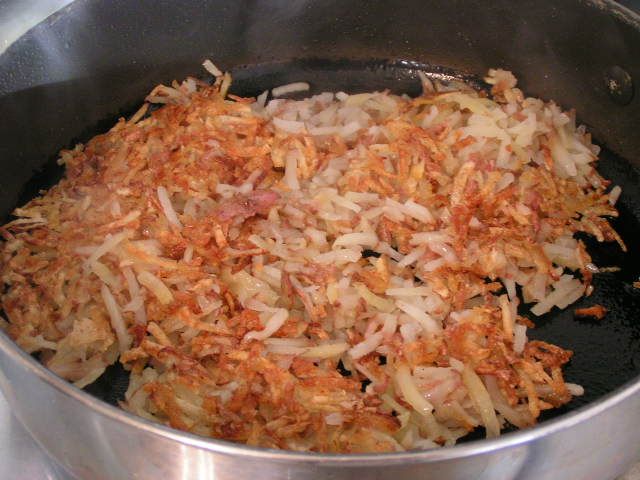 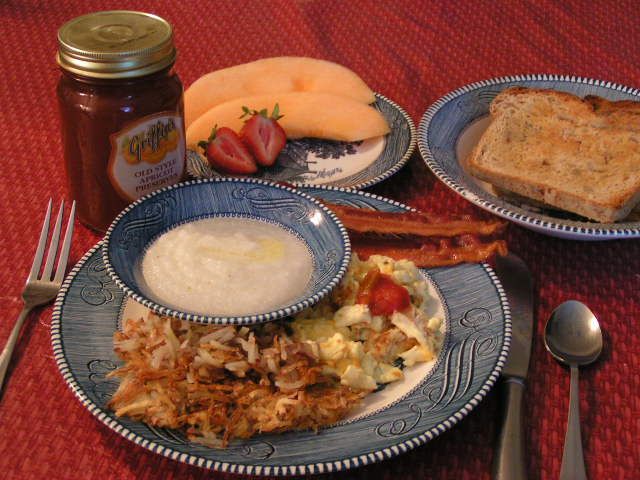  Cook until the second side is browned and crisp. Remove from the pan and pat with paper towels to remove any excess oil. Serve as a side dish. And don’t forget the grits!! |
|
Oklahoma Pastry Cloth™ Company on Facebook
|
|
|
Healthy Butter
Sunday, February 13th, 2011
|
Butter…Because It Is! Just a quick tip for those of you who love butter, but would like to add more of the “good fat” to your diet. There are things that I have done to make my eating habits more healthy and more fat-free. But I WON’T do without my butter!! While I know, in my last post, I admitted that I like Velveeta cheese, which it could be argued is not really cheese, I can’t stand margarine. And talk about bad fats…ewwww. All I know is that God made cows which make milk that is churned into butter without any additives. There is no animal that has produced a stick of margarine. It’s pretend butter. Anybody remember that “it’s not nice to fool with Mother Nature!” routine? Nowadays, one can spend a pretty penny on butter that has been mixed with olive oil or canola oil to increase the good fats and to make it spreadable. I’ll show you here how you can do the same thing for a whole lot less. 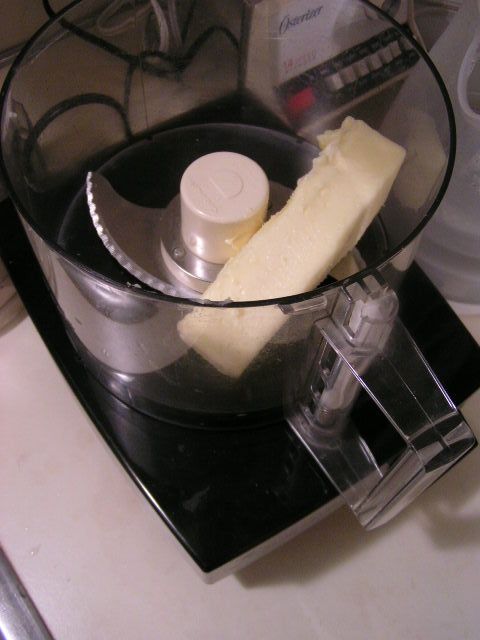 For about 3/4 cup of soft butter, use one stick of real butter, at room temp, either salted or unsalted depending on which you prefer, and place into a blender or food processor. 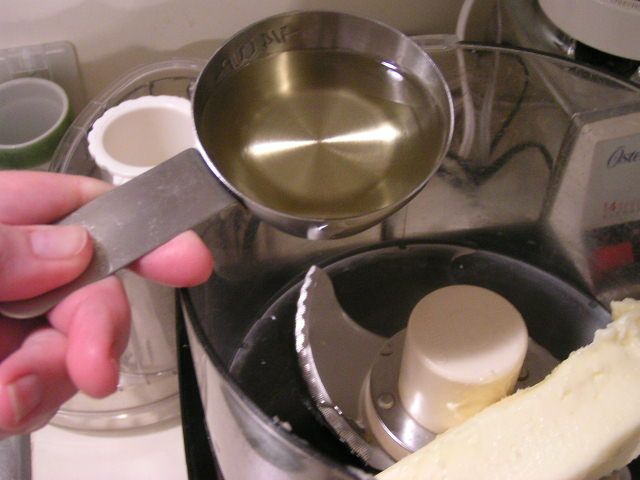 Add 1/3 cup light olive oil. 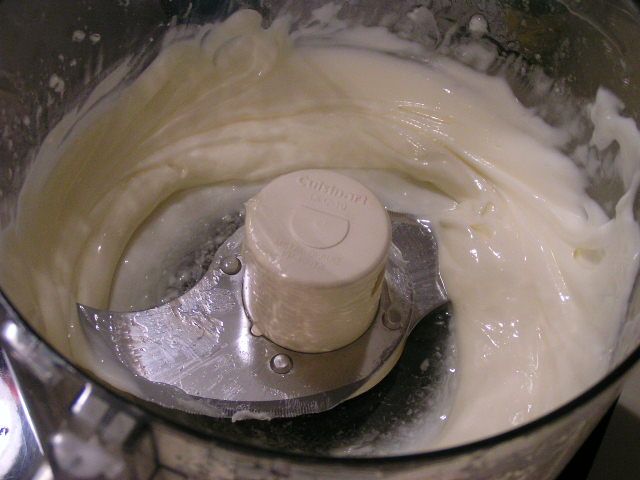 Process until the butter and oil are completely mixed. The consistency will be that of whipped cream and some of the oil may still be separated out, but you can just stir that in.  Pour the mixture into a container and refrigerate for several hours  You will have spreadable butter that is part butter and part olive or canola oil, both of which are higher in mono and polyunsaturated fats – the good fats. And it tastes good too!!! |
|
Oklahoma Pastry Cloth™ Company on Facebook
|
|
|
Yep!! Canning Cheese
Wednesday, February 9th, 2011
 I’ve always heard that “necessity is the mother of invention” but I also think that it is “the mother of learning something new”. Such was the case recently after a productive trip to our local grocery which is owned and operated by the Absentee-Shawnee Indian Tribe. On this particular day I discovered that the store had block cheese on sale; 1 8oz block for $1. Never one to pass up a good deal, I decided that if one block of cheddar was good, 20 blocks of a variety of cheese was phenomenal! I tossed mild cheddar, mozzarella, sharp cheddar, pepper jack and cojack into my cart and trotted on down the isle. To my surprise, I found that Velveeta was on sale too. Oh joy. Now, I must digress here for a sec in defense of Velveeta cheese PRODUCT. Although I realize that Velveeta is the plasticized version of cheese, it is a must for any kitchen simply because it melts sooooo smoothly. It is wonderful for cream soups. It is true that nobody REALLY knows where Velveeta comes from. And while we are told that it is made from milk, it could be guinea pig milk for all we know. However, while we ponder how one milks a guinea pig, the rest of America is enjoying its queso made with Velveeta, picante sauce and maybe some ground beef flavored with taco seasoning. Velveeta is to the cheese world what Spam is to the ham world. Each has its purpose. And so, I got my Velveeta and checked out. On my way home, it occurred to me that all of this cheese had to have a place to go to stay fresh. I usually grate my hard cheese, put it into bags that I can vacuum on my FoodSaver sealer and then freeze it, but this was going to be an enormous amount of grated cheese. What if I wanted sliced cheese? My experience with freezing blocks of cheese for slicing had been less than successful. I had been totally unhappy with frozen Velveeta, so what to do? What to do? Thank goodness for the Internet. Enola Gay at Paratus Familia had the solution. Can it! Can cheese? Really? She showed how to can hard cheeses and that got me to thinking about canning the Velveeta too. I researched and researched and found several ways to do that as well. I wound up with what I think worked best for me. So first, I’ll show you how I canned the hard cheeses and then the Velveeta. Talk about handy. You can’t believe how wonderful it is to have canned cheeses. You can shred and slice the hard cheese and the Velveeta is just as good as if it were in the box. I suppose at this point I should throw in the disclaimer that I haven’t found anything that indicates the government watchdogs have given their seal of approval to this, but then, they don’t like us canning apple pie filling either. From everything I have read, these canned cheeses last up to two years. 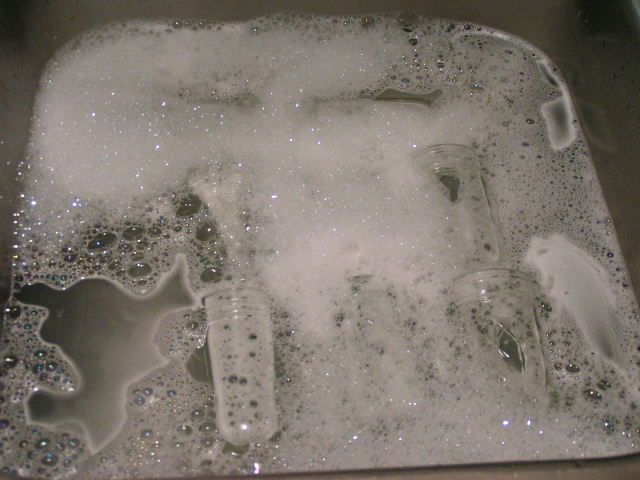  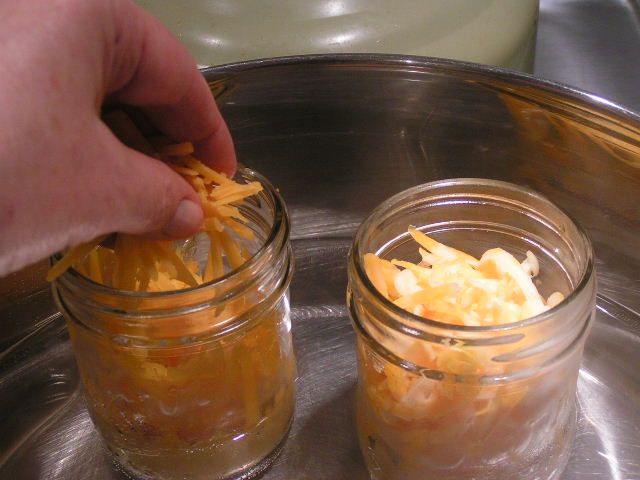 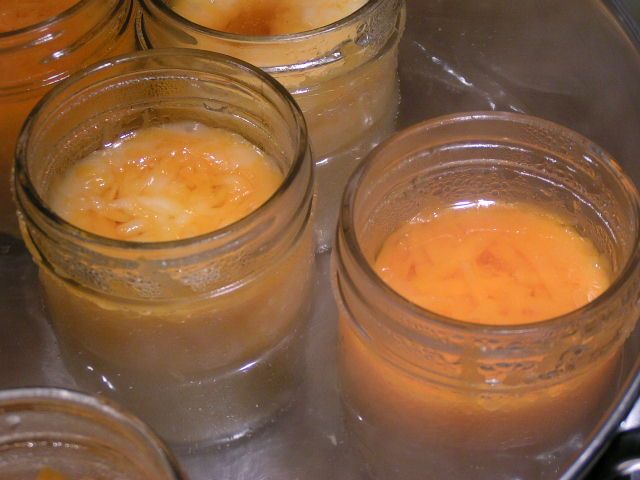  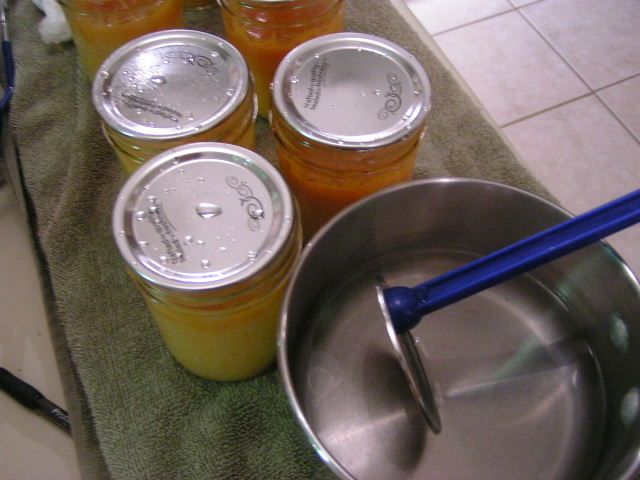 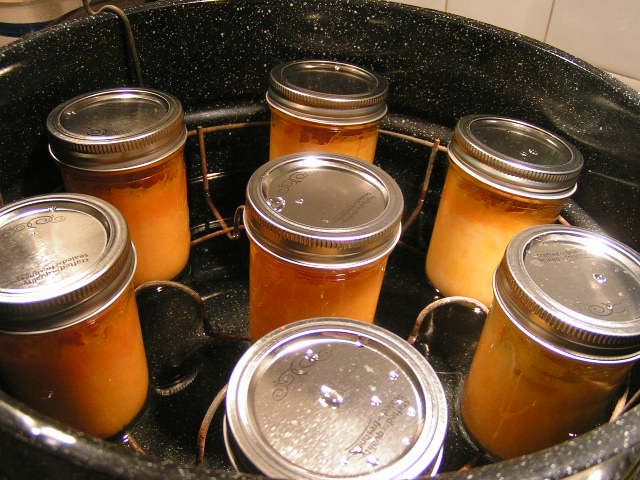  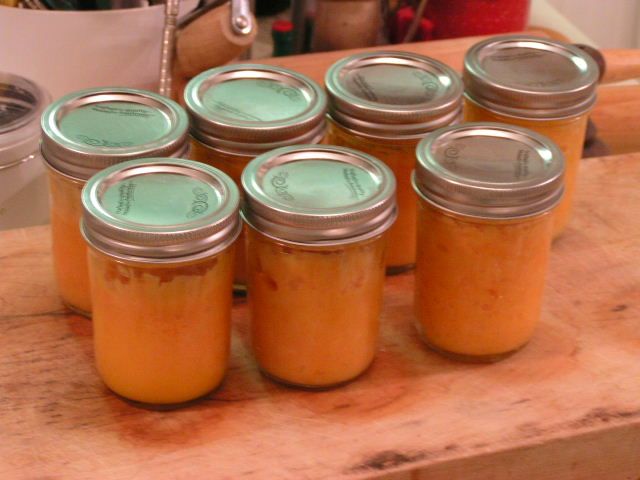 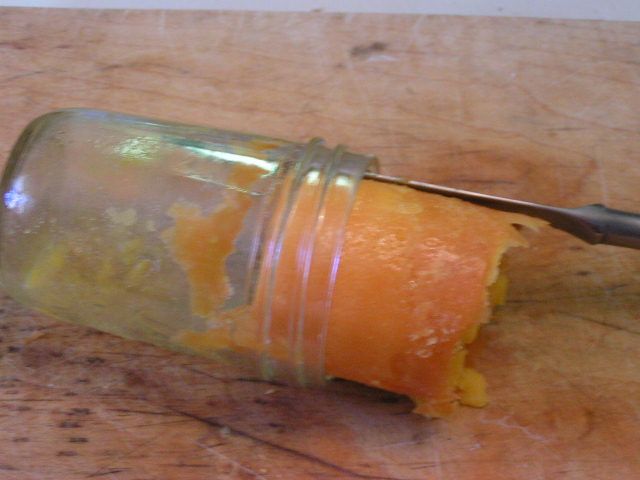 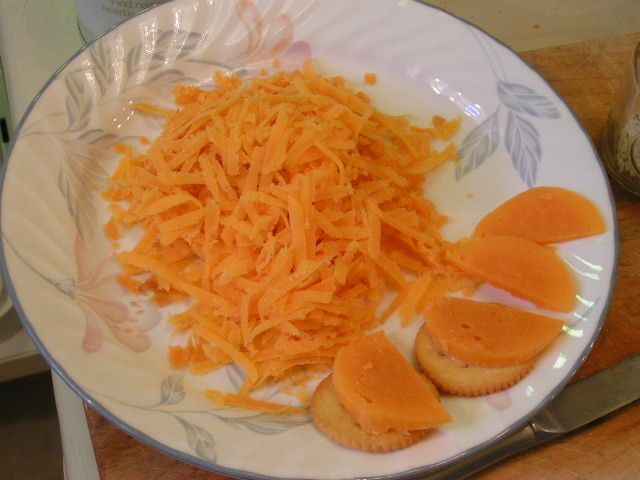 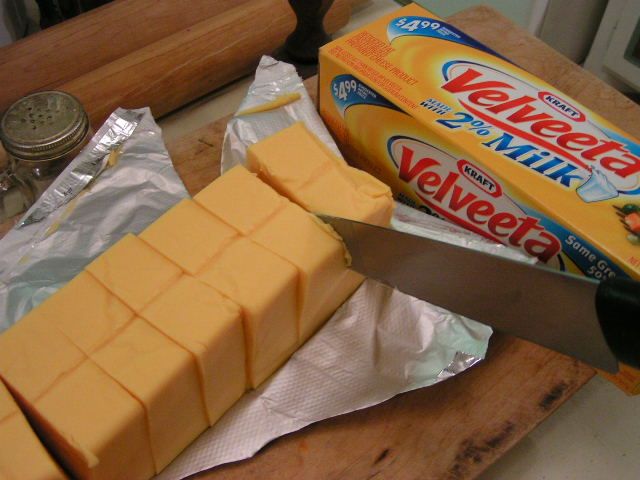 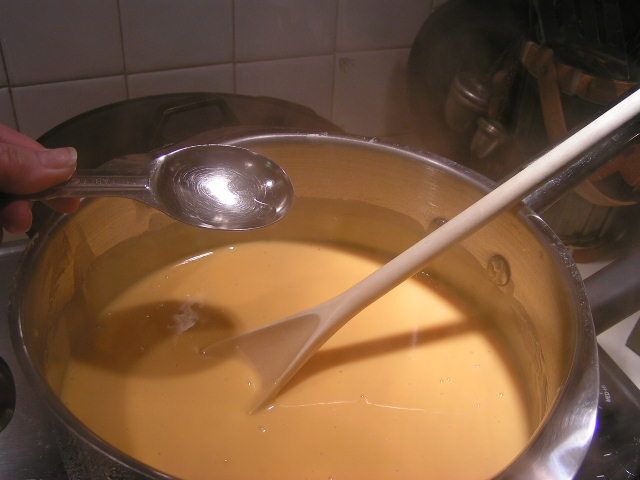  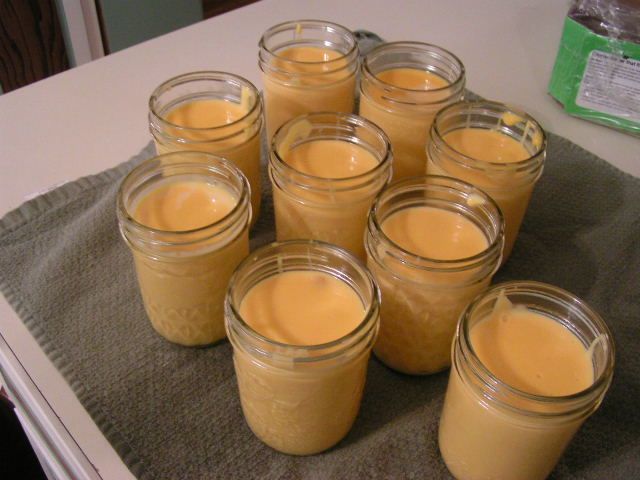 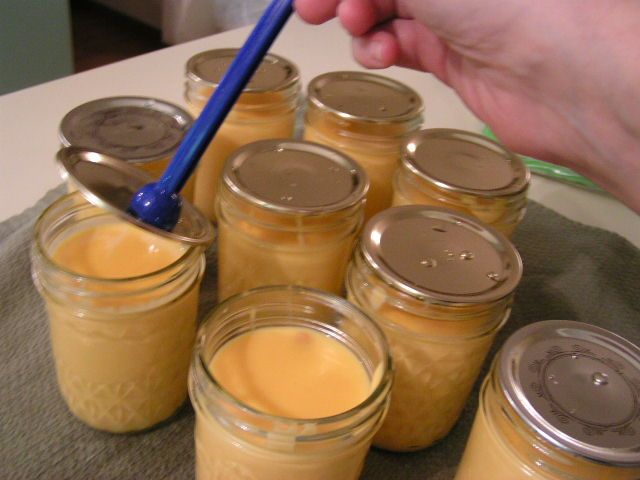 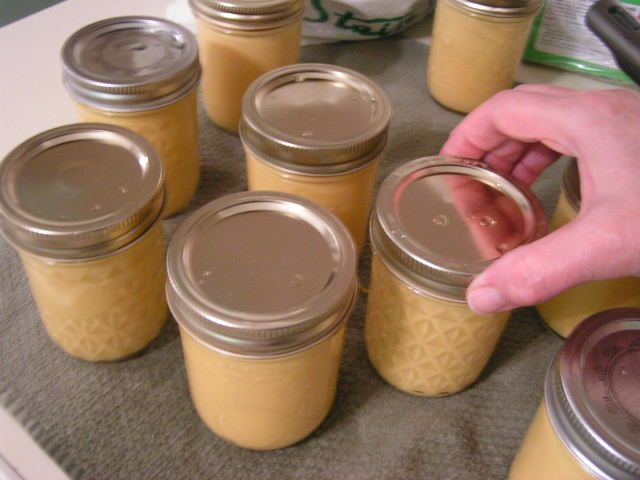 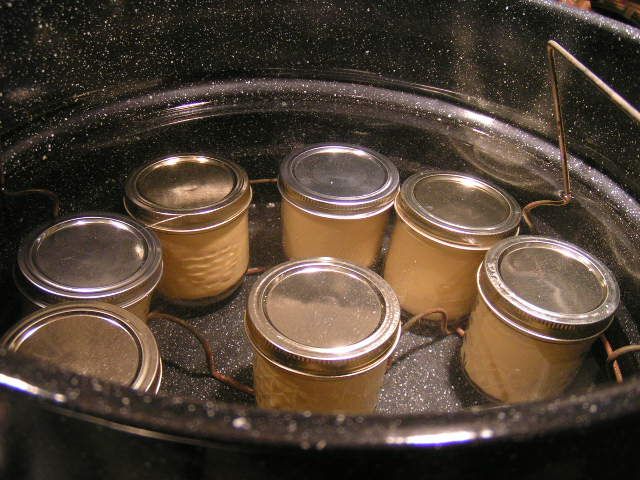 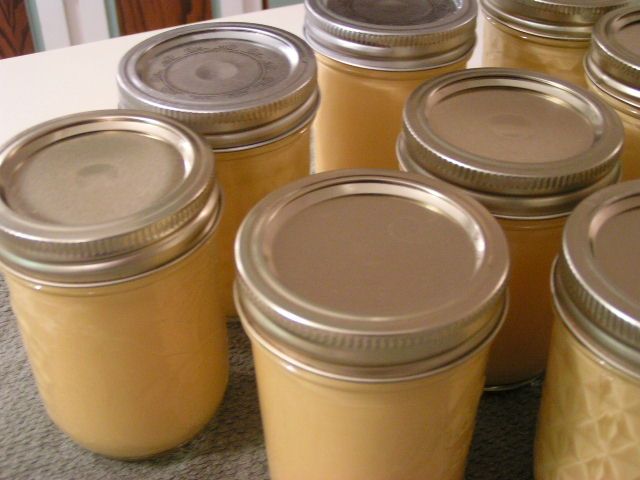 Oklahoma Pastry Cloth™ Company on Facebook
|
Gift Ideas
Friday, February 4th, 2011
Oklahoma Winter
Wednesday, February 2nd, 2011
 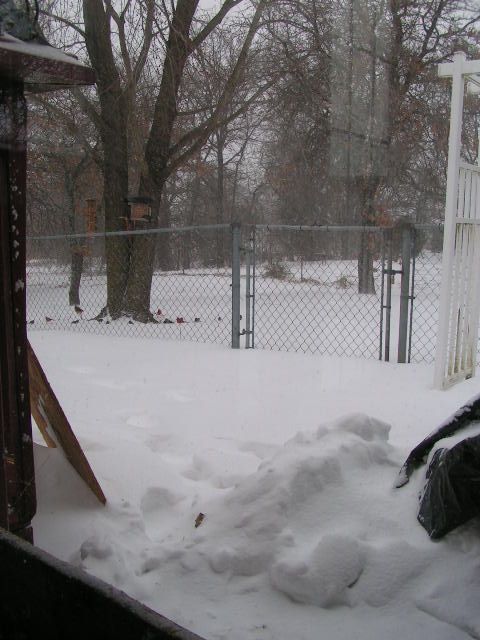 In Oklahoma, we’re pretty used to weather extremes. It’s not unusual to have a three inch rain pop up with consequential flooding or a tornado rip through 20 miles of farmland and homes. You’ve see the pictures of the ice storms that I’ve posted and the results of extraordinarily violent twisters. As I’ve pointed out, we’re a resilient group of people and many of us plan way ahead of time for all kinds of possibilities. The ability of our people to keep things running with “a piece of baling wire or twine” isn’t unique but keeps us ‘keepin’ on’. But even with our low-keyed responses to impending doom, it doesn’t stop our local weathermen from shooting epinephrine and revving their engines to morph into maniacal harbingers of catastrophe and certain death. Such was the case this past weekend as the top meteorologists at our three local stations went into overdrive and excitedly announced that the storm of all storms was going to bring the entire state to a screeching – er – sliding halt. Almost suppressing giggles of glee, they attempted a serious demeanor to express the certain destruction that was ahead, but it was obvious they considered this event to be what made life worth living and their jobs finally legitimate.  As soon as the blizzard hit on Monday night, the stations sounded their continual little warning tones throughout the evening and by Tuesday morning, all those in the tv weather rooms and on the roads, with cameras and microphones, were keeping a steady conversation that only needed a, “How bad is it?” “It’s sooooo bad that…..” joke. Embarrassed fools who attempted to travel in over a foot of blowing snow and ice and subsequently slid into 4 foot drifts, discovered microphones in their faces and the question, “So. What happened here? What is your name?” I loved one man’s answer, “My name really doesn’t matter now does it? And I slid into a snowdrift. Duh.” The reporter was kind enough not to remind the man that he was pretty stupid for trying to navigate the roads, except that the reporter was out there right beside him, having attempted to navigate the roads! 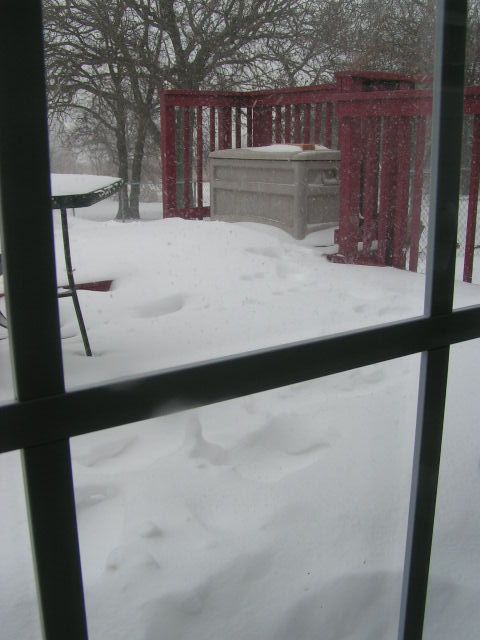 And so, winter is again in Okieland, however, this particular storm HAS outdone itself. Blizzards are not a common occurrence here, but MOST Oklahomans were ready for this one and are snug in their homes in front of their woodstoves, fireplaces or gas heaters, drinking hot chocolate, playing Rummy and cooking some darned good dishes. So far, no reports of hypothermia or other weather related deaths. The groceries have been shut down as have the government offices, but no worries because most were prepared. I guess we can thank the weathermen!  |
|
Oklahoma Pastry Cloth™ Company on Facebook
|
|
|


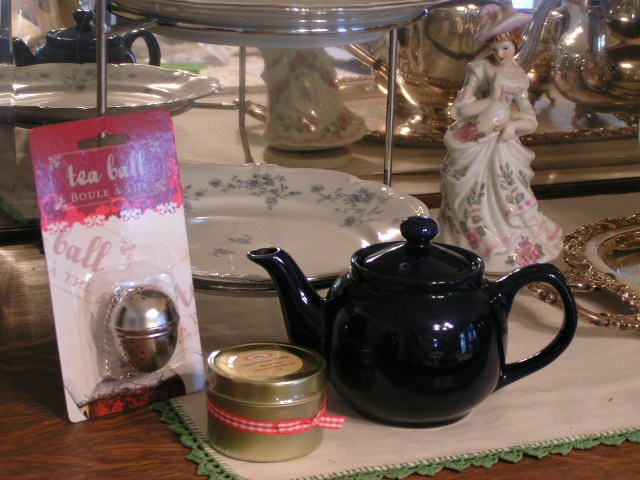
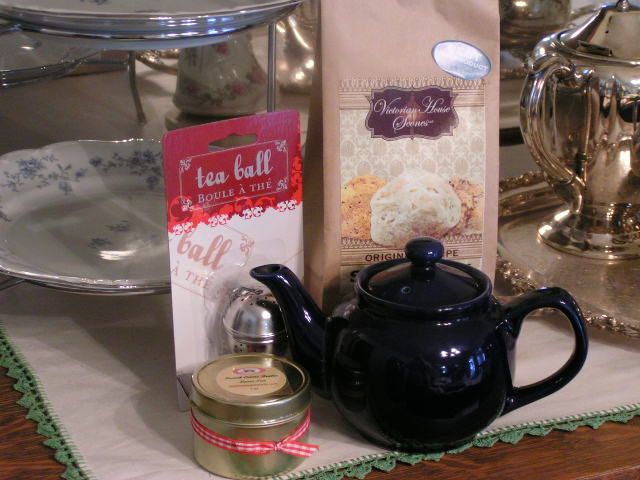
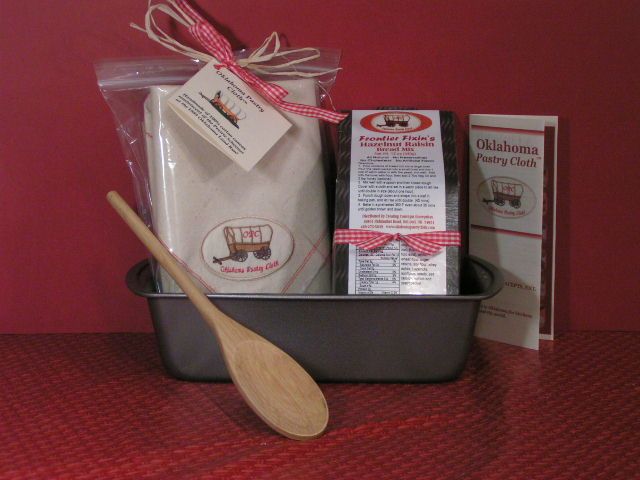

 Homestead Revival
Homestead Revival Paratus Familia
Paratus Familia Rural Revolution
Rural Revolution